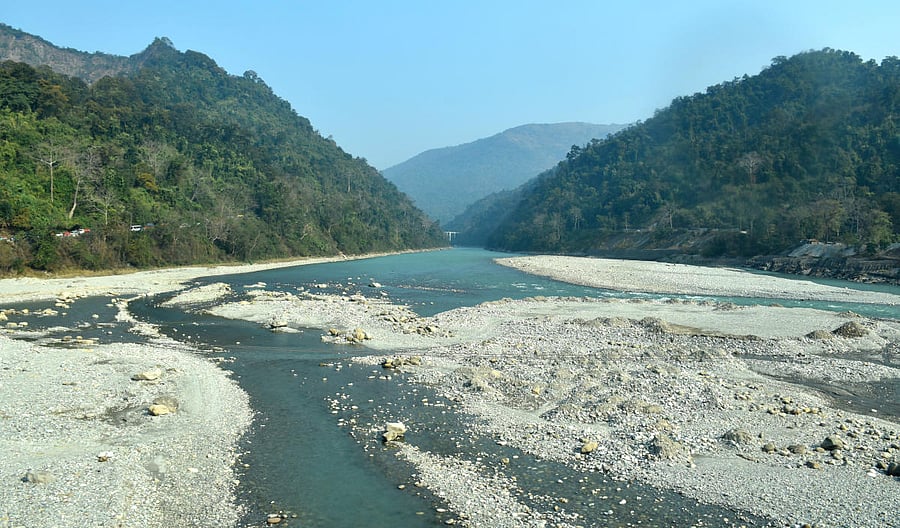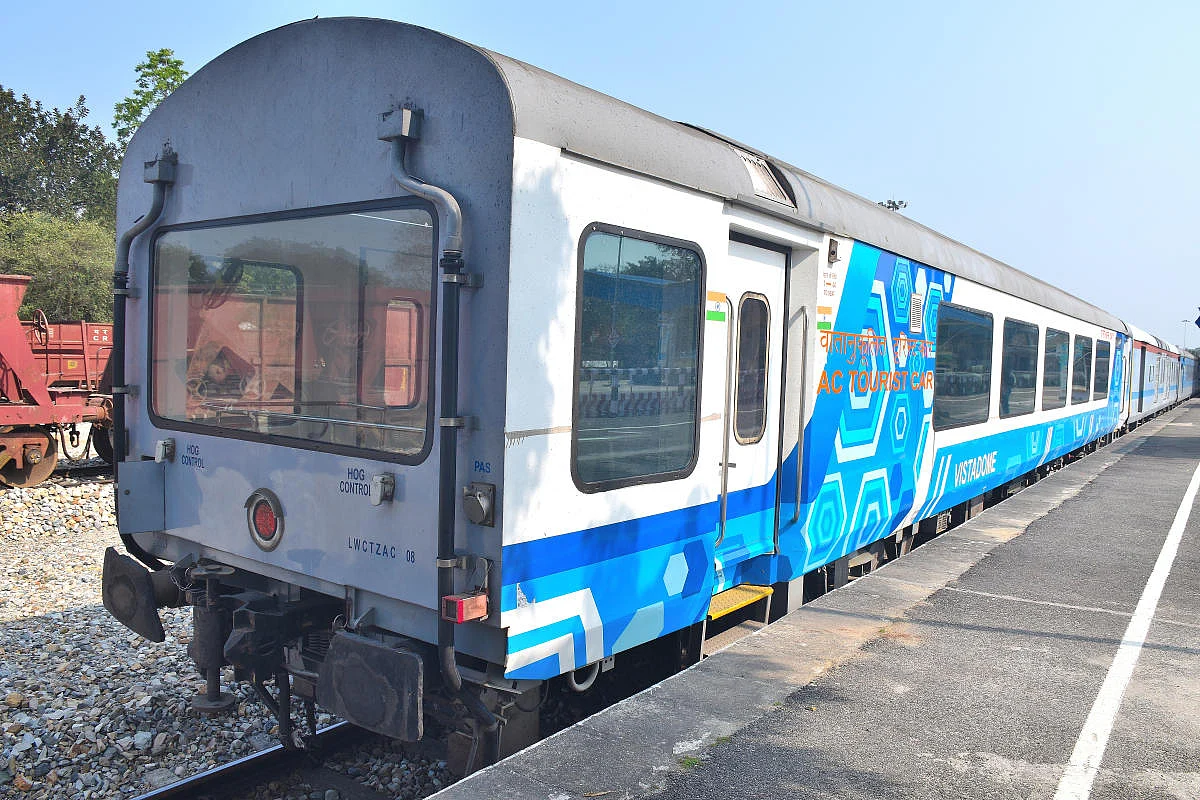

Where is Dooars? Most people ask. In the map of India, the sliver of land running east-west, which connects the entire North-East of India to the rest of the country, with the hills of Bhutan to the north and Bangladesh to its south. That is the Dooars region. Tea gardens, thick forests and numerous rivers have just hop-skipped down from the Himalayas and touched the plains. The Indian Railways has introduced a tourist train through Dooars with a Vistadome Coach at the end which has an Observation Lounge with 180 degrees of view of this spectacularly picturesque journey. I hopped on the Vistadome Coach at New Jalpaiguri Station — popularly known as NJP — on a fine Saturday morning, heading east for Alipurduar.
The transparent panels on the roof and extra-large windows give a wide, unobstructed view while seated. Even the seats can be swivelled around to face the window. It is a rare luxury. The jungle comes at a hand-shaking distance as the train approaches Sevok, just away from the metropolis of Siliguri. The train then crosses the gushing Teesta River with the famous Coronation Bridge in sight, yonder, between the folds of the hills. The Himalayan foothills, which seamlessly borders India with Bhutan, hardly ever leave the view. Tea gardens appear on the planes or on gentle slopes, like paintings, complete with workers, mostly women, with tall cane buckets straddled to their backs, bending forward while picking tea leaves and throwing them back into the buckets. I walk to the far end of the coach to the Observation Lounge.
Being the last coach of the train, with glass on all three sides, the view of the trailing pair of rails and the dense jungle on both sides is mesmerising. Just then a peacock appeared from the jungle on one side and crossed the rails to go to the other side. It all happened too quickly to capture in the camera. “If you are lucky, Sir, you can see deer, peacocks and sometimes even wild elephants in this journey through the jungles,” said the young, smartly dressed stewardess of the Coach. “Would you like tea, coffee, or any snacks, Sir?” she asked. I bought chips and coffee. One sip of coffee and a wide riverbed appeared with crystal blue water snaking through. “This is Murti River, Sir,” said the stewardess. “Tell me more,” I said. “Well, this whole region, Dooars — as it is called, is full of rivers and is famous for National Parks and Reserve Forests. That is why for each station on this route, we announce the National Parks and Reserve Forests that you can access from there. Gorumara National Park, Jaldapara for its famous rhinoceros, Buxa Tiger Reserve. Many, many more.” The five-and-a-half-hour journey with hills, forests, rivers, tea gardens and a sudden lone peacock thrown in as a bonus ended as we chugged into Alipurduar Junction. It was worth every penny.
Travel Tips
The Tourist Train travels between New Jalpaiguri (NJP) and Alipurduar Junction only on weekends as of now.
The train starts from NJP in the morning, and the same train returns in the afternoon.
The Vistadome Coach charges EC fare.
NJP station is near Siliguri in West Bengal and is well connected by air (Bagdogra Airport), rail and road.